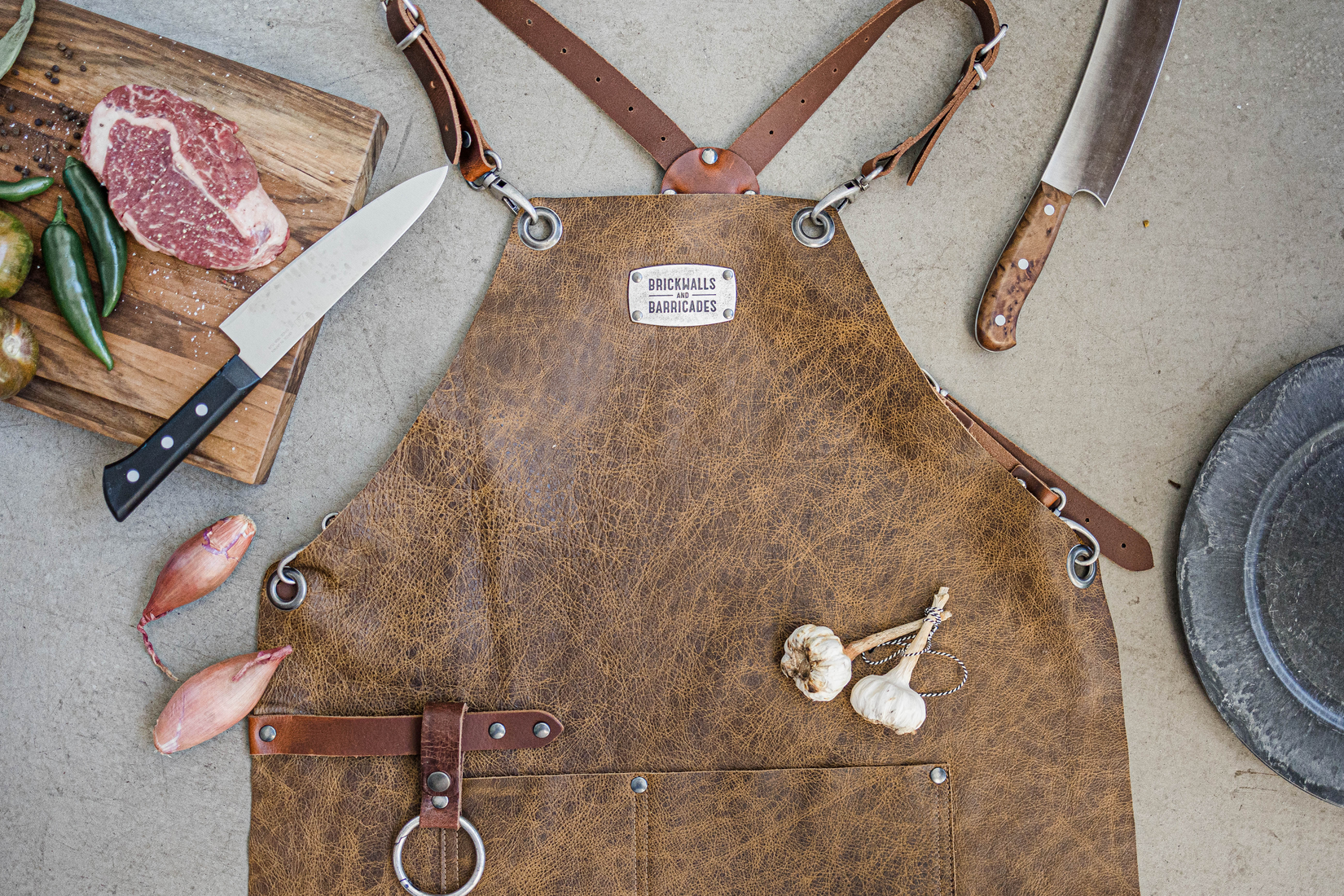Leather aprons have been around for centuries, providing protection and style to various professions. From blacksmiths and butchers to chefs and artists, leather aprons are a versatile accessory that offers numerous benefits. In this blog post, we will explore the history and evolution of leather aprons, their advantages and disadvantages, the different types of leather used, and how to care for them.
The History and Evolution of Leather Aprons
Leather aprons have been used for centuries, dating back to the medieval times when they were worn by blacksmiths, metal workers, and other craftsmen. These early leather aprons were typically made from cowhide and were designed to protect the wearer from flying sparks and hot metal.
As time progressed, the use of leather aprons expanded to other professions such as butchers, cobblers, and carpenters. Leather aprons were also used by soldiers as a form of protection during battle.
In the early 20th century, leather aprons became popular among chefs and bakers, as they provided a practical and stylish way to protect their clothing from spills and stains while working in the kitchen.
Today, leather aprons are widely used in various professions, from woodworking and metalworking to bartending and tattooing. They come in a range of styles and designs, catering to different needs and preferences.
Advantages of Leather Aprons
Durability:
Leather aprons are incredibly durable and can withstand daily wear and tear. They are resistant to punctures, tears, and abrasions, making them ideal for professions that require a high level of physical activity.
Protection:
Leather aprons offer excellent protection from heat, chemicals, and sharp objects. They are perfect for professions that involve working with fire, hot liquids, and dangerous machinery.
Comfort:
Leather aprons are comfortable to wear, thanks to their soft and supple texture. They mold to the wearer's body, providing a snug fit that doesn't restrict movement.
Style:
Leather aprons are stylish and add a touch of sophistication to any profession. They come in a range of colors and designs, making it easy to find one that matches your personal style.
Disadvantages of Leather Aprons
Cost:
Leather aprons can be expensive, especially if you opt for high-quality leather. However, they are a long-term investment and can last for many years with proper care, amking them in the end a great value for money.
Maintenance:
In general, leather aprons require regular maintenance to keep them in good condition. They need to be cleaned and conditioned regularly to prevent cracking and drying out. Unless you opt for a leather apron from our premium collection. The only maintenance these leather aprons need is a simple whipe-off after use and you are good to go
Weight:
Leather aprons can be heavy, especially if they are made from thick leather. This can be uncomfortable for some wearers, especially if they need to wear the apron for an extended period. Opt for a leather apron that is light weight and go for a model with shoulder straps so you will be comfortable all day long.
Types of Leather Used for Aprons
Cowhide:
Cowhide is the most common type of leather used for aprons. It is durable, affordable, and provides excellent protection from heat and sharp objects. Cowhide aprons are available in a range of thicknesses, catering to different needs and preferences.
Goatskin or Sheepskin:
Goatskin or sheepskin is a lighter and softer leather than cowhide. It is comfortable to wear but will damage and tear much more easily. We woudnt recommend a leather apron made from this material for professional use.
Suede:
Suede leather is made from the underside of the animal's skin and has a soft, velvety texture. It is not as durable as cowhide but is lightweight and comfortable to wear but will stain easily and is hard to clean. Suede aprons are ideal for professions that require a high level of mobility and flexibility and doesnt get too messy (like for example woodworking).
Split Leather:
Split leather is made from the fibrous part of the animal's hide, which is separated from the top grain. It is not as durable as full-grain leather but is more affordable and still offers good protection from heat and sharp objects. Split leather aprons are often used in industries such as welding and metalworking.
Buffalo Hide:
Buffalo hide is a thick and sturdy leather that offers excellent protection from heat and sharp objects. It is more durable than cowhide and is often used in industries such as woodworking and blacksmithing.
Choosing the Right Leather Apron
When choosing a leather apron, there are several factors to consider, including the type of leather used, the thickness of the leather, and the style and design of the apron.
Type of Leather:
The type of leather used will depend on the specific needs and requirements of the profession. Cowhide and Buffalo hide are the most common types of leather used for aprons, offering good durability and protection.
Thickness of Leather:
The thickness of the leather will also depend on the profession. Thicker leather offers more protection but can be heavy and uncomfortable to wear for long periods. Thinner leather offers more flexibility and mobility but may not provide as much protection.
Style and Design:
Leather aprons come in a range of styles and designs, from traditional blacksmith aprons to modern chef aprons. When choosing a leather apron, consider the specific needs and requirements of the profession, as well as personal style preferences.
Caring for Leather Aprons
To ensure that your leather apron lasts for many years, it is important to care for it properly. Here are some tips for caring for leather aprons:
Clean regularly:
Leather aprons should be cleaned regularly to remove dirt and grime. Use a damp cloth to wipe down the apron and remove any stains. Avoid using soap or other harsh chemicals, as these can damage the leather.
Condition the leather:
Leather aprons should be conditioned regularly to keep them soft and supple. Use a leather conditioner to moisturize the leather and prevent it from drying out and cracking. Our own fully natural leather conditioner is specially developed for your leather apron maintenance and can be found here
Store properly:
When not in use, store the leather apron in a cool and dry place. Avoid exposing it to direct sunlight or heat, as this can damage the leather.
Avoid water:
Leather aprons should be kept away from water as much as possible, as water can damage the leather and cause it to become stiff and brittle.
Repair any damage:
If the leather apron becomes damaged, it should be repaired as soon as possible to prevent further damage. Take it to a professional leather repair service to ensure that the repair is done properly.
Conclusion
Leather aprons are a versatile and practical accessory that offers numerous benefits. They provide excellent protection from heat, chemicals, and sharp objects, while also adding a touch of style and sophistication to any profession. With proper care and maintenance, leather aprons can last for many years, making them a worthwhile investment for anyone who works in a profession that requires a high level of physical activity and protection. When choosing a leather apron, consider the specific needs and requirements of the profession, as well as personal style preferences, to ensure that you find the right apron for your needs.
Check out our full collection of leather aprons here.







